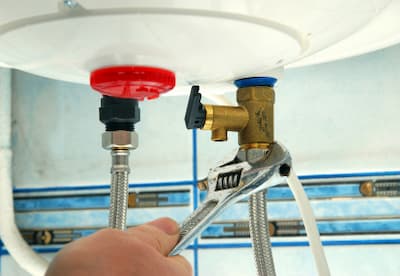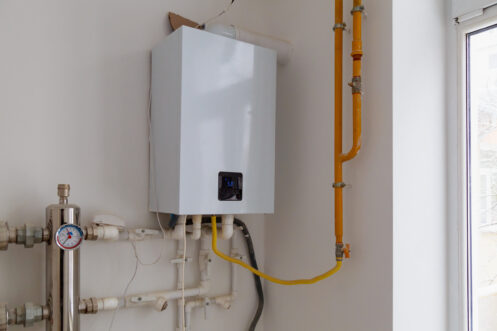The writer is making a few great points about How to Maintain Your Water Heater & Prolong its Life overall in this article beneath.

Hot water is important for daily comfort, whether it's for a refreshing shower or cleaning recipes. To ensure your warm water system runs successfully and lasts much longer, routine maintenance is essential. This post gives useful ideas and insights on how to maintain your home's warm water system to prevent disruptions and pricey repair services.
Introduction
Keeping your home's warm water system might appear difficult, but with a few simple actions, you can guarantee it runs smoothly for several years to find. This guide covers every little thing from comprehending your hot water system to DIY upkeep suggestions and recognizing when to employ specialist assistance.
Significance of Maintaining Your Hot Water System
Normal maintenance not just expands the life expectancy of your hot water system but additionally ensures it operates effectively. Neglecting upkeep can cause decreased performance, higher energy costs, and even early failing of the system.
Indications Your Warm Water System Needs Upkeep
Knowing when your warm water system needs focus can stop major problems. Look out for indicators such as inconsistent water temperature level, unusual noises from the heating unit, or corroded water.
Understanding Your Hot Water System
Prior to diving into maintenance jobs, it's practical to comprehend the standard parts of your hot water system. Usually, this includes the hot water heater itself, pipelines, anode rods, and temperature controls.
Regular Monthly Upkeep Tasks
Routine monthly checks can assist capture small issues prior to they intensify.
Flushing the Hot Water Heater
Purging your hot water heater gets rid of sediment accumulation, improving efficiency and prolonging its life.
Checking and Replacing Anode Rods
Anode rods stop deterioration inside the storage tank. Checking and changing them when worn is crucial.
Inspecting and Changing Temperature Settings
Readjusting the temperature level settings guarantees ideal efficiency and safety.
DIY Tips for Maintenance
You can execute a number of maintenance tasks yourself to keep your hot water system in top condition.
Checking for Leaks
Frequently check pipelines and links for leakages, as these can cause water damage and greater costs.
Examining Stress Alleviation Valves
Examining the pressure relief valve ensures it functions properly and prevents excessive stress build-up.
Protecting Pipelines
Protecting warm water pipelines decreases heat loss and can conserve power.
When to Call a Specialist
While DIY maintenance is beneficial, some concerns call for specialist experience.
Facility Problems Calling For Expert Help
Examples consist of significant leaks, electric issues, or if your hot water heater is regularly underperforming.
Routine Specialist Upkeep Advantages
Specialist upkeep can consist of complete assessments, tune-ups, and guaranteeing compliance with safety and security requirements.
Conclusion
Regular upkeep of your home's warm water system is important for performance, durability, and cost financial savings. By complying with these suggestions and recognizing when to seek specialist assistance, you can ensure a reliable supply of warm water without unexpected disruptions.
Water Heater Maintenance: The Basics
Maintaining your water heater will ensure it operates efficiently and has a longer lifespan. Neglecting regular maintenance can lead to costly repairs and an even bigger chunk of your savings if you have to replace it sooner than necessary. But there’s good news: Most water heater maintenance tasks are relatively simple and easy for homeowners with basic DIY skills.
Flush the Water Heater
Over time, sediment and minerals can build up in the tank, reducing its efficiency and potentially causing damage. To flush the tank, turn off the power or gas supply, attach a hose to the drain valve near the bottom and open the valve to drain the water until it runs clear. Ideally, flush the tank annually.
Replace the Anode Rod
The anode rod is a sacrificial metal rod that helps prevent corrosion inside the tank. Inspect and replace it every three to five years or per the manufacturer's recommendation. To replace the anode rod, turn off the power or gas supply, drain a few gallons of water from the tank, unscrew the old rod and replace it with a new one. If the anode rod is significantly corroded or covered in calcium buildup, it's a sign the water heater may need to be replaced soon.
Tune-Up
A yearly tune-up can help identify potential issues and ensure your water heater operates at peak efficiency. This typically involves checking the thermostat, burner assembly (for gas heaters) and any other components specified by the manufacturer. During a tune-up, the technician may also clean the burner and adjust the pilot light (for gas heaters) or examine the heating elements (for electric heaters).
How to Maintain Your Water Heater
- Insulate the tank. Insulating the tank can improve energy efficiency and reduce heat loss, saving you money on energy bills. You can purchase precut insulation blankets designed specifically for water heaters or use standard fiberglass insulation wrapped securely around the tank.
- Check the temperature. The recommended water temperature for most households is around 120 degrees Fahrenheit (49 degrees Celsius). Higher temperatures can increase energy costs and potentially cause scalding. Use a kitchen thermometer to check the temperature at the faucet nearest the water heater.
- Monitor water pressure. Excessive water pressure can strain the water heater and cause leaks or even tank failure. Install a pressure-reducing valve if necessary. The ideal water pressure range is between 60 and 70 PSI (pounds per square inch).
- Test the temperature and pressure (T&P) relief valve. The T&P relief valve is a safety feature that releases pressure if the tank gets too hot or the pressure builds up too high. Test it annually by lifting the lever and allowing a small amount of water to release. Replace the valve if it doesn't release water or reseal properly.
- Check for leaks. Regularly inspect the tank, pipes and fittings for leaks or corrosion. Deal with issues promptly to prevent further damage. Even a small leak can lead to significant water damage over time.
- Consider a tankless water heater. If your traditional tank-style water heater is nearing the end of its lifespan ( typically 10 years), consider replacing it with a tankless water heater. These units heat water on demand, reducing standby energy losses and potentially saving you money on your energy bills.
- Schedule professional maintenance. While homeowners can perform many water heater maintenance tasks, it's still a good idea to schedule professional maintenance every few years. A plumber or HVAC technician can thoroughly inspect the unit, identify potential issues and ensure it operates safely and efficiently.
https://www.homeserve.com/en-us/blog/home-improvement/hot-water-heater-maintanence/

I'm certainly very inquisitive about How to Maintain a Hot Water Heater in a Few Simple Steps and I'm hoping you enjoyed reading our post. Sharing is good. Helping people is fun. I thank you for your readership.
Request An Estimate
Comments on “Simple Methods to Care for Your Home's Hot Water System Effectively”